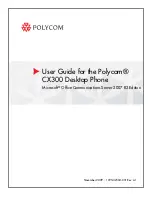
D-8
Cisco Security Appliance Command Line Configuration Guide
OL-12172-03
Appendix D Addresses, Protocols, and Ports
IPv6 Addresses
Unspecified Address
The unspecified address, 0:0:0:0:0:0:0:0, indicates the absence of an IPv6 address. For example, a newly
initialized node on an IPv6 network may use the unspecified address as the source address in its packets
until it receives its IPv6 address.
Note
The IPv6 unspecified address cannot be assigned to an interface. The unspecified IPv6 addresses must
not be used as destination addresses in IPv6 packets or the IPv6 routing header.
Loopback Address
The loopback address, 0:0:0:0:0:0:0:1, may be used by a node to send an IPv6 packet to itself. The
loopback address in IPv6 functions the same as the loopback address in IPv4 (127.0.0.1).
Note
The IPv6 loopback address cannot be assigned to a physical interface. A packet that has the IPv6
loopback address as its source or destination address must remain within the node that created the packet.
IPv6 routers do not forward packets that have the IPv6 loopback address as their source or destination
address.
Interface Identifiers
Interface identifiers in IPv6 unicast addresses are used to identify the interfaces on a link. They need to
be unique within a subnet prefix. In many cases, the interface identifier is derived from the interface
link-layer address. The same interface identifier may be used on multiple interfaces of a single node, as
long as those interfaces are attached to different subnets.
For all unicast addresses, except those that start with the binary 000, the interface identifier is required
to be 64 bits long and to be constructed in the Modified EUI-64 format. The Modified EUI-64 format is
created from the 48-bit MAC address by inverting the universal/local bit in the address and by inserting
the hexadecimal number FFFE between the upper three bytes and lower three bytes of the of the MAC
address.
For example, and interface with the MAC address of 00E0.b601.3B7A would have a 64-bit interface ID
of 02E0:B6FF:FE01:3B7A.
Multicast Address
An IPv6 multicast address is an identifier for a group of interfaces, typically on different nodes. A packet
sent to a multicast address is delivered to all interfaces identified by the multicast address. An interface
may belong to any number of multicast groups.
An IPv6 multicast address has a prefix of FF00::/8 (1111 1111). The octet following the prefix defines
the type and scope of the multicast address. A permanently assigned (“well known”) multicast address
has a flag parameter equal to 0; a temporary (“transient”) multicast address has a flag parameter equal
to 1. A multicast address that has the scope of a node, link, site, or organization, or a global scope has a
scope parameter of 1, 2, 5, 8, or E, respectively. For example, a multicast address with the prefix
FF02::/16 is a permanent multicast address with a link scope.
Figure D-1
shows the format of the IPv6
multicast address.
Summary of Contents for 500 Series
Page 38: ...Contents xxxviii Cisco Security Appliance Command Line Configuration Guide OL 12172 03 ...
Page 45: ...P A R T 1 Getting Started and General Information ...
Page 46: ......
Page 277: ...P A R T 2 Configuring the Firewall ...
Page 278: ......
Page 561: ...P A R T 3 Configuring VPN ...
Page 562: ......
Page 891: ...P A R T 4 System Administration ...
Page 892: ......
Page 975: ...P A R T 5 Reference ...
Page 976: ......
















































